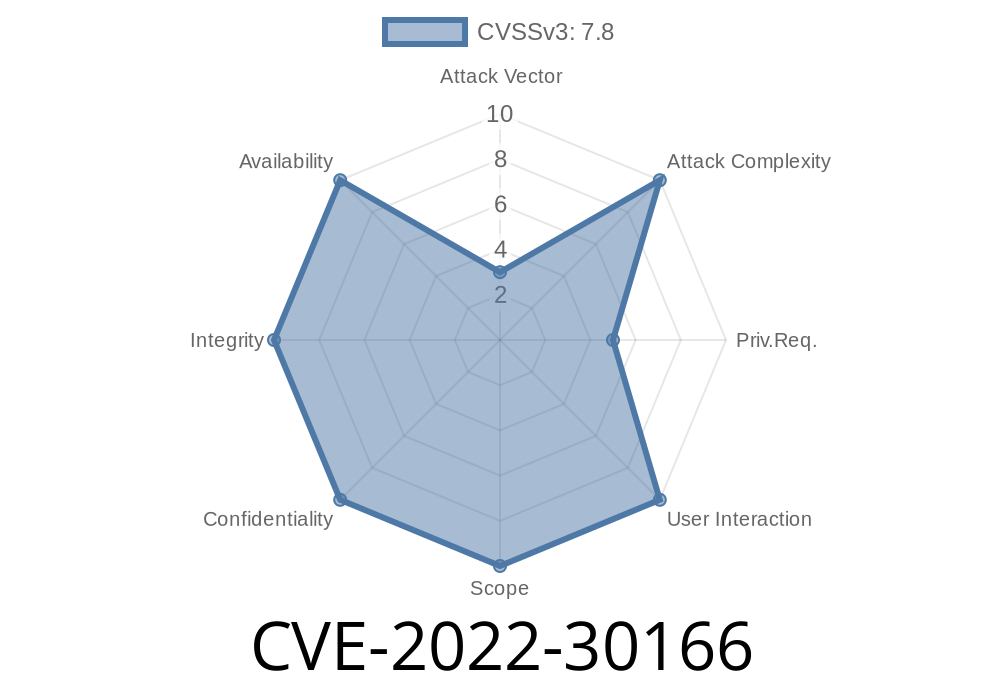The CVE-2022-30166 vulnerability affects the Local Security Authority Subsystem Service (LSASS), which is a crucial component of the Windows operating system. LSASS is responsible for enforcing security policies on the system and managing access to the network and resources. This vulnerability allows an attacker to exploit the system and elevate their privilege status. In this in-depth article, we will cover the following:
Understanding LSASS
LSASS is a critical system component that ensures the security of Windows operating systems. It enforces a variety of security policies like logging users on and off the system, verifying users, and managing access to security tokens. In addition, LSASS communicates with user-mode authentication packages like Kerberos and NTLM.
Overview of the CVE-2022-30166 vulnerability
The CVE-2022-30166 vulnerability is an elevation of privilege vulnerability affecting LSASS. This vulnerability allows malicious actors to execute arbitrary code on the target system and elevate their privilege levels. As a result, the attacker gains complete control over the system, making it easy to access sensitive resources and confidential information.
Severity: High
CVE ID: CVE-2022-30166
Affected Systems: Windows operating systems
How the vulnerability is exploited
The attacker with low-level privileges accesses the vulnerable system by exploiting the LSASS vulnerability. Then, they inject arbitrary code, leading to an elevation of their privileges. Once the attacker has elevated their privileges, they can perform various malicious activities, such as installing unauthorized software, manipulating data, and taking over the system.
Code snippet and namespaces involved
The exact code snippet responsible for the vulnerability has not been released to prevent further exploitation. However, we will discuss the concept of namepipe which plays a crucial role in this vulnerability.
A named pipe is a communication mechanism used by LSASS for interprocess communication between different system services. The vulnerability originates from improper handling of the named pipe, which allows unauthorized access and code execution.
For demonstration purposes, here's a sample code snippet of creating a named pipe server in C++
#include <windows.h>
#include <iostream>
int main()
{
HANDLE hPipe = INVALID_HANDLE_VALUE;
const char *pszPipeName = "\\\\.\\pipe\\vulnerable_pipe";
hPipe = CreateNamedPipe(
pszPipeName,
PIPE_ACCESS_DUPLEX, // read/write access
PIPE_TYPE_BYTE | PIPE_READMODE_BYTE | PIPE_WAIT,
PIPE_UNLIMITED_INSTANCES, // maximum number of instances
1024, // output buffer size
1024, // input buffer size
, // default time-out
NULL); // default security attributes
if (INVALID_HANDLE_VALUE == hPipe)
{
std::cerr << "CreateNamedPipe failed, error: " << GetLastError() << std::endl;
return EXIT_FAILURE;
}
std::cout << "Named pipe server is ready" << std::endl;
// Other implementation details
return EXIT_SUCCESS;
}
Links to original references and mitigation steps
- Microsoft Security Advisory
- National Vulnerability Database
Mitigation
Microsoft has released patches to address this vulnerability for affected systems. Users should apply the security updates as soon as possible to protect their systems. Additionally, organizations should follow standard security best practices such as restricting access to privileged accounts, implementing network segmentation, and monitoring system security events.
Conclusion
CVE-2022-30166 is a high-severity elevation of privilege vulnerability affecting LSASS in Windows operating systems, and it poses a significant risk to organizations and individuals. Patching the vulnerability and following best security practices is the key to preventing unauthorized access and protecting sensitive information.
Timeline
Published on: 06/15/2022 22:15:00 UTC
Last modified on: 07/15/2022 17:15:00 UTC
